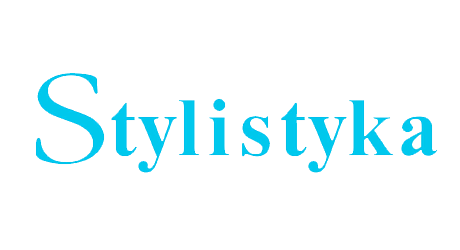Bartůňková J., Zachová A., 1995, Od textu k hypertextu, „Spisovná čeština a jazyková kultura 1993: sborník z olomoucké konference 22. – 27. 8. 1993“, Praha, s. 202–207.
Google Scholar
BurkhardtA., 1987, Wie die „wahre Welt“ endlich zur Metapher wurde. Zur Konstitution, Leistung und Typologie der Metapher, „Conceptus“ XXI, nr. 52, s. 40–44.
Google Scholar
Clyne M., 1987, Cultural differences in the organization of academic texts: English and German, „Journal of Pragmatics“, 11, s. 211–247.
Google Scholar
Clyne M., 1991, Zu kulturellen Unterschieden in der Produktion und Wahrnehmung englisher und deutscher wissenschaftlicher texte, „Info Daf“18, s. 376-383.
Google Scholar
Cvrček V., Kováříková D., Mácha J., Křen M., 2011, Korpus odborných lingvistických textů, http://www.korpus.cz.
Google Scholar
Čechová M., 2005, Proměny současných odborných komunikátů, „Stylistyka“, XIV, s. 287-294.
Google Scholar
Čermák F., 2011,Jazyk a jazykověda, Praha.
Google Scholar
Čmejrková S., Daneš F., Světlá J., Jak napsat odborný text, Praha.
Google Scholar
Čmejrková S., 2013, Vědecký styl, „Studie k moderní mluvnici češtiny 2. Komunikační situace a styl“, Olomouc, s. 70-94.
Google Scholar
Daneš F., 1997, Jazyk vědy, „Český jazyk na přelomu tisíciletí“,Praha, s. 68–83.
Google Scholar
Daneš F., 2000, Jakou řečí mluví věda. Modalizace vědeckého diskurzu, „Slovo a slovesnost“ 61, č. 2, s. 81–92.
Google Scholar
Filipec J., Čermák F. 1985, Česká lexikologie, Praha.
Google Scholar
Galtung J., 1981, Structure, culture, and intellectual style: An essay comparing saxonic, teutonic, gallic and nipponic approaches, „Sociale Science Information“, s. 817–856.
Google Scholar
Hoffmannová J., 1990, Pohled na funkční spektrum metafory z perspektivy funkce gnozeologické, „Úloha metafory ve vědeckém poznávání a vyjadřování“, Praha, s. 57–64.
Google Scholar
Ickler T., 1993, Zur Funktion der Metapher, besonders in Fachtexten, „Fachsprache, Internationale Zeitschrift für Fachsprachenforschung – Didaktik und Terminologie“, Heft 3–4.
Google Scholar
Jelínek M., 1955, Odborný styl, „Slovo a slovesnost“ 16, č. 1, s. 25-37.
Google Scholar
Karlík Petr, Nekula M., Pleskalová J. (eds.), 2002, Encyklopedický slovník češtiny, Brno.
Google Scholar
Kraus J., 1994, K současným vývojovým proměnám vědeckého a odborného vyjadřování, „Naše řeč“ 77, č. 1, s. 14-19.
Google Scholar
Krčmová M, 2008, Pojmovost jako konstituující faktor projevu. Funkční styl odborný, „Současná stylistika“, Praha, s. 208–229.
Google Scholar
Křen M., Bartoň T., Cvrček V., Hnátková M., Jelínek T., Kocek J., Novotná R., Petkevič V., Procházka P., Schmiedtová V., Skoumalová H., 2010, SYN2010: žánrově vyvážený korpus psané češtiny, http://www.korpus.cz.
Google Scholar
Křen M., Cvrček V., Čapka T., Čermáková A., Hnátková M., Chlumská L., Jelínek T., Kováříková D., Petkevič V., Procházka P., Skoumalová H., Škrabal M., Truneček P., Vondřička P., Zasina A. J., 2015, SYN2015: reprezentativní korpus psané češtiny, http://www.korpus.cz.
Google Scholar
Mareš P., 2013, Podoby českého vědeckého stylu, „Přednášky z 56. běhu Letní školy slovanských studií“, Praha, s. 37-47.
Google Scholar
Mistrík, J., 1997, Štylistika, Bratislava.
Google Scholar
Slančová D., 1998, K pragmatickej charakteristike slovnej zásoby, „Jazyk a kultura vyjadřování: Milanu Jelínkovi k pětasedmdesátinám“, Brno, s. 185-191.
Google Scholar
Tešitelová M. aj., 1983, Psaná a mluvená odborná čeština z kvantitativního hlediska (v rámci věcného stylu), Praha.
Google Scholar
Tešitelová M. aj., 1985, Kvantitativní charakteristiky současné češtiny, Praha.
Google Scholar


 https://doi.org/10.25167/Stylistyka26.2017.13
https://doi.org/10.25167/Stylistyka26.2017.13